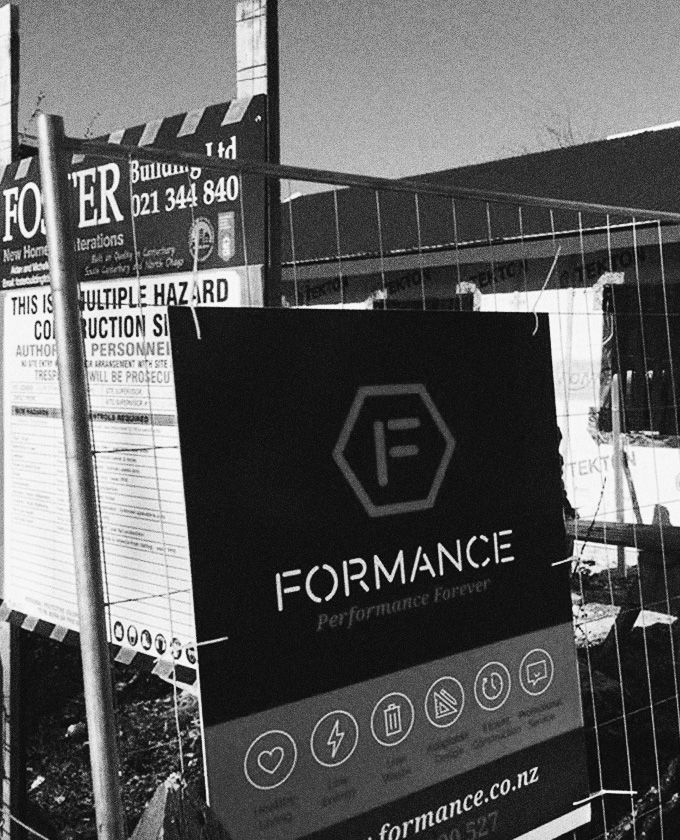When you want a home that ‘feels like home’, Formance delivers.
If there’s one fundamental decision you need to get right it’s the fabric for the envelope of your house. Most other things can be upgraded later.
For a home to give superior performance its essential to separate the interior and exterior environments well. One of the most critical elements of a sustainable home is the building envelope (the roof, external walls and the floor). You don’t have control of the outside environment; but with the right choices you can have control of the inside one.
Formance Structural Insulated Panels (SIPs) are a high performance building material for the ultimate sustainable home. They provide high insulation, high strength and a low eco footprint for your building envelope. The right material choice for ongoing high performance in hot and cold climatic zones anywhere in New Zealand.

The building envelope plays 4 key roles. STRUCTURAL, WEATHER-TIGHTNESS, THERMAL, VISUAL in order of importance.
Formance panels provide significant improvements in all areas compared to traditional construction methods, but the biggest difference is seen in the hugely increased thermal performance. Thermal performance has two components. Airtightness and Thermal Conductivity. Airtightness is measured in Air Changes Per Hour at 50pa of pressure and Thermal Conductivity is measured in R Value. The most important component to get right is air-tightness because with a leaky envelope you can’t hope to have proper control. When used in roof and walls Formance panels easily achieve the highest standards of airtightness possible today. R Value is important but less important than air-tightness.
For NZ conditions a truly airtight building with an envelope R Value of more than 4 is more than sufficient to slash heating and cooling energy usage compared to traditional construction methods. You may wish to have more or less R Value in your envelope depending on your requirements.
Reduced energy use
Consider energy usage and total cost of ownership. In New Zealand we see the trend of larger homes, with less occupants, and energy costs doubling over the past 13 years. 40% of a home’s energy consumption is related to heating and cooling.
With drastically reduced heating and cooling requirements in a Formance™ house you’re set for ongoing energy savings from the moment you move in. Traditional methods of insulating your home deteriorate over time, and are subject to variation in installation meaning laboratory values for their insulation properties are highly unlikely to be achieved during a real build, and will reduce over time. Not so with Formance™. Using Formance™ removes the possibility of variation in installation of insulation and maintains it’s super-high insulation performance year after year.
High levels of comfort
Experience high levels of comfort and health with controlled ventilation. The high airtightness of a Formance™ home allows unprecedented control over the inside environment, meaning a reduction in allergens and airborne pollutants. Your home should not just be a place to seek shelter, it should enhance your life, your lifestyle and ensure the health of your family is not compromised by unhealthy living conditions. Formance™ homes set new standards.
Reduced energy use
SIPs are incredibly strong, effectively providing double bracing capacity to the wall. Beside bracing, Formance™ SIPs have huge impact resistance both inside and out, and because they’re nailed and bonded at the joints they will be creak-free forever. Houses that get noisier over time through movement in wall and roof connections are a thing of the past; post-build structure degradation simply does not happen with a Formance™ SIP building.
This strength is even more valuable in the New Zealand environment where we are subject to earthquakes. Formance SIPs have two key attributes that really stand out when discussing how they stand up to earthquakes; they have huge strength and they have great ductility.
So not only do they withstand the applied force of an earthquake really really well but they have a unique ability to take the shock out of the movement by allowing some non-permanent flex in the stucture. Engineers call this ductility – the ability of a material (such as a metal or asphalt cement) to undergo permanent deformation through elongation (reduction in cross-sectional area) or bending at room temperature without fracturing.
More rigid and brittle materials like concrete tend to fail abruptly without warning and once gone they require extensive remediation or replacement. The engineers measure resistance to earthquake movement in Bracing Units and have other more technical terms for it but for the rest of us it simply means they can withstand severe earthquakes and keep us safe inside.
Areas Covered
Copyright © 2022 Foster Building | Supplied by SPF

